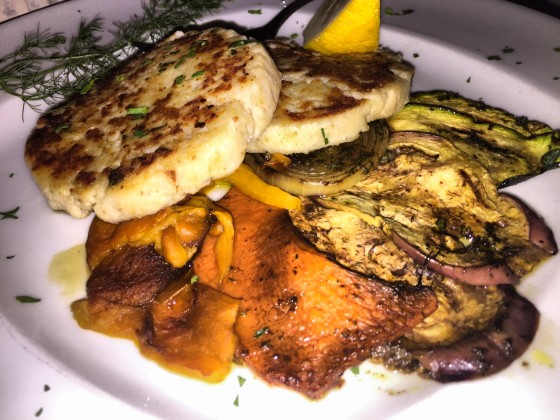
The big goal, “eating well,” which is part of the even bigger goal, “be healthy,” is challenging for most people. There are several reasons.
First, unhealthy foods often taste delicious! So delicious, they are addictive. It’s true when they say in those commercials, “Bet you can’t eat just one.” You would never hear that about salad, or an apple. But when it comes to “treats,” I have trouble eating just one chip, or just one spoonful of ice cream.
Second, there are so many pieces to the “eating well” puzzle: whole grains, fruits, vegetables, lean vs. fatty meat, avoiding soda and other sugary drinks. That’s why if you want to make changes that stick, the method that works is working on one small change at a time for the 21 days it takes to make it a habit. Then, once it’s a habit—once it’s automatic and routine, and you don’t have to think about it—you can move on to add another habit, and so on.
And third, the “rules” keep changing. So you have to make sure to keep reading about the latest and adjust accordingly.
I love learning (the fifth rule of my Six Simple Rules for a Better Life is “Be a Lifelong Learner”) and I always read the latest updates so I can “Be Healthy” (the sixth of my Six Simple Rules). So, I was pleased when we had a wellness seminar at work regarding healthy lunches.
Here are my notes from the session, with thanks to presenter Janet Brancato, Outpatient Dietician/Community Educator at the Valley Hospital in Ridgewood, New Jersey.
- Don’t skip meals.
- Eat a meal with a combination of foods that help keep your energy and mental alertness up.
- Include a whole grain with lean protein. Add a veggie and a fruit. Hydrate with water.
- Protein helps with appetite control. Lean meat, chicken, fish, plant protein.
- Try for two whole fruits a day and three veggie servings. Some at lunch. Some at dinner. Some for snacks. Fruits are nutrient dense: Lots of fiber and nutrition for fewer calories. High in water content. Fruit also helps with sweets craving.
- Build variety into your meals: to avoid boredom and to get many nutrients.
- Use moderation with spreads, condiments, dressing, snacks, and sweets.
- Bringing lunch gives you more control of ingredients and quantities. Eating out often results in high calories and high fat and sodium content. It’s also budget friendly. You don’t have to do it every day and if it’s new to you, try to work in one meal a week from home, then two, then three, until you get to a number that works for you.
- Plan ahead for meals and snacks. Use a list when shopping. Make a list for your needs for the coming week’s lunches.
- Leftovers are a great option. If you are going through all that trouble to make dinner, make some extra and save it for lunch the next day. Or you can repurpose it. For example, leftover grilled chicken and veggies can be turned into a healthy wrap. Roasted chicken can be used for soups, stir fries, wraps, salads, chicken salad, or tossed with whole grain.
- Salads are a great option. Use greens, lean protein, whole grain sprinkled on (for example, a half cup of quinoa), and top it with berries or other fruit. Use light dressing such as an olive oil-based vinaigrette.
- If you eat a sandwiches, use whole grain bread with at least 3-5 grams of fiber, lean protein, and veggies. If you add a condiment, use only a thin layer.
- Roll ups give you protein without the bread. Simply roll up pieces of turkey. Or roll protein into lettuce as the wrap.
- Homemade soups are a great option. You can make a big batch and freeze portions for later. Soups ca be a meal with protein, veggies, and whole grains.
- A snack is usually needed between lunch and dinner. Pack healthy snacks that fill you up. Think fiber/protein mix, and less than 200 calories. Think of the fives: 5 grams of fiber, 5 grams of protein, less than 5 grams of sugar.
- Practice mindful eating. Slow down and savor your meal. Eat without distractions. Doing this will allow you to tune into your cues so you know when you are hungry and when you are full. And then snack only when you are hungry.
- Snack ideas: low-fat yogurt sprinkled with a few almonds, low-fat cottage cheese with fresh fruit, a piece of string cheese, a small cup of edamame, a handful of your favorite nuts, half of a turkey or peanut butter sandwich, a three-ounce can of tuna with four-to-six low-fat crackers, two rice cakes spread with peanut butter, apple slices or celery sticks spread with peanut butter.
- Drink water. Drink unsweetened beverages: seltzer with lemon, green tea, unsweetened iced tea, unsweetened almond milk, skim milk.
- Ways to cut calories at lunch: try a piece of fruit to satisfy your sweet tooth, leave three-to-four bites of food on your plate, use smaller plates, and bring some cut up veggies to munch on.
- Watch portions: Use your hand as a tool. Your fist is a cup of whole grains. The palm of your hand is three ounces of protein. One cupped hand is a half cup of nuts. Your thumb is a tablespoon of dressing.
Remember: Don’t let this long list of ideas overwhelm you. Just pick one. Work on that for the 21 days it takes to make it into a habit. Then work on another, and another.
What are your secrets to eating healthy lunches? Join the conversation with your comments…
Best regards,
David
